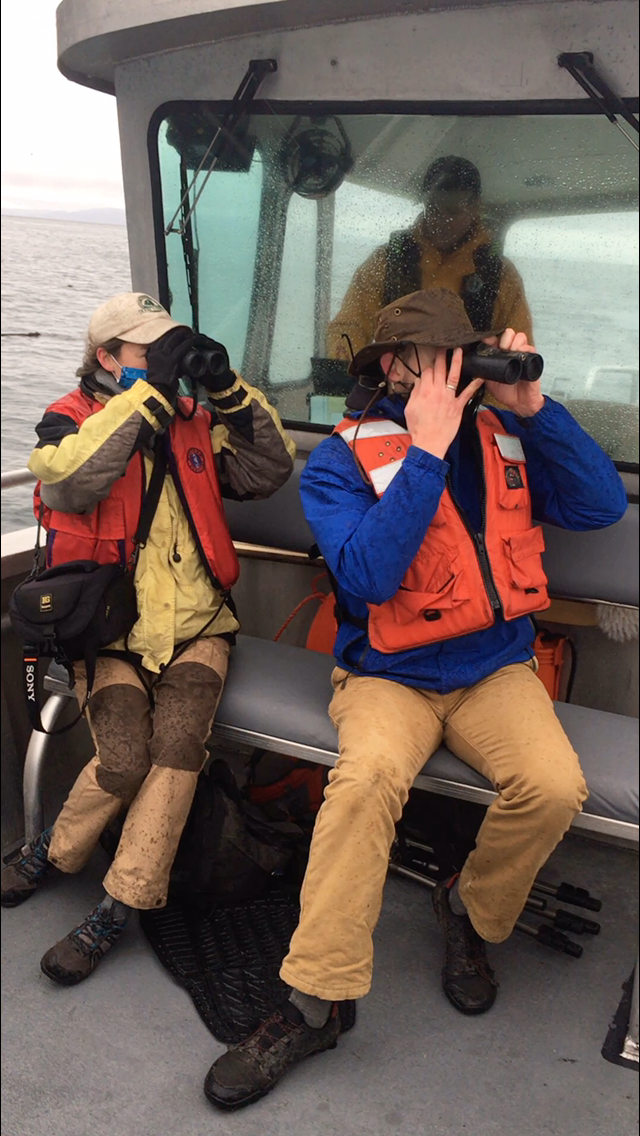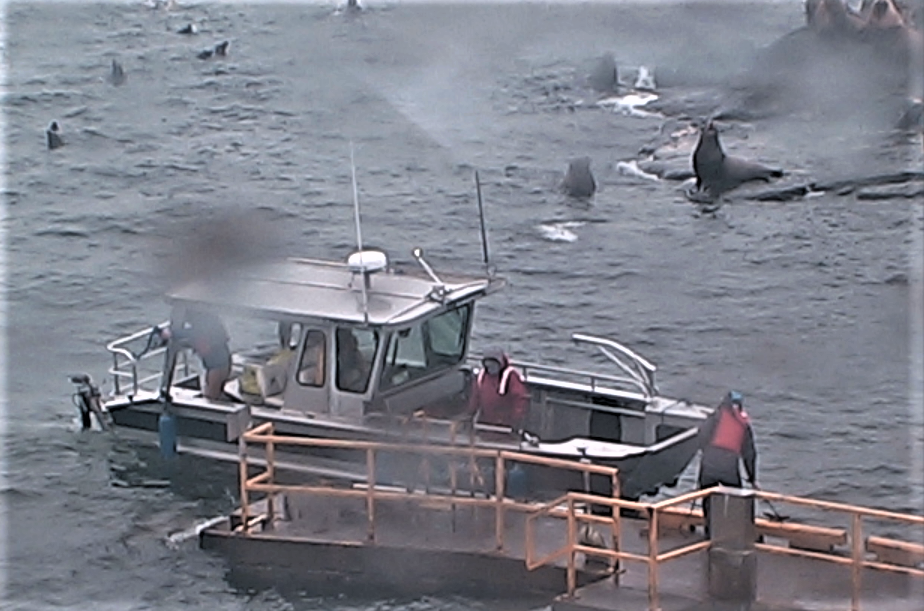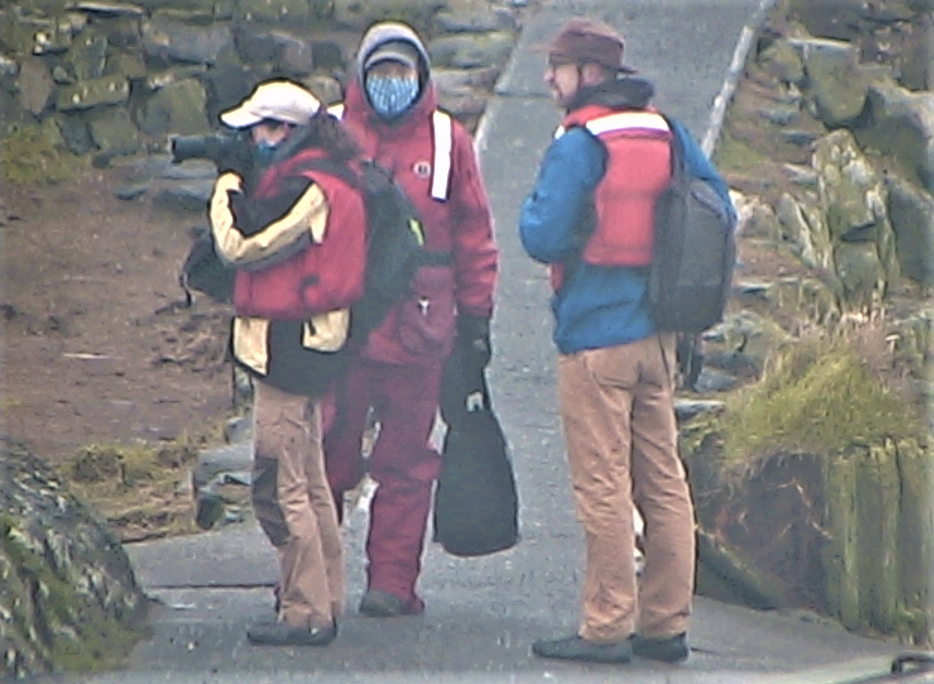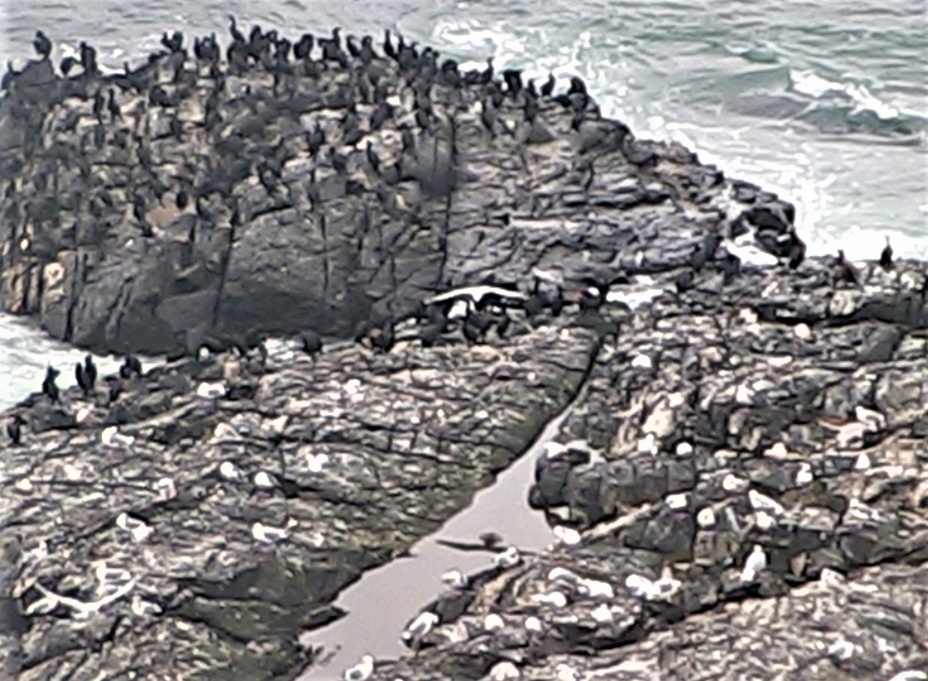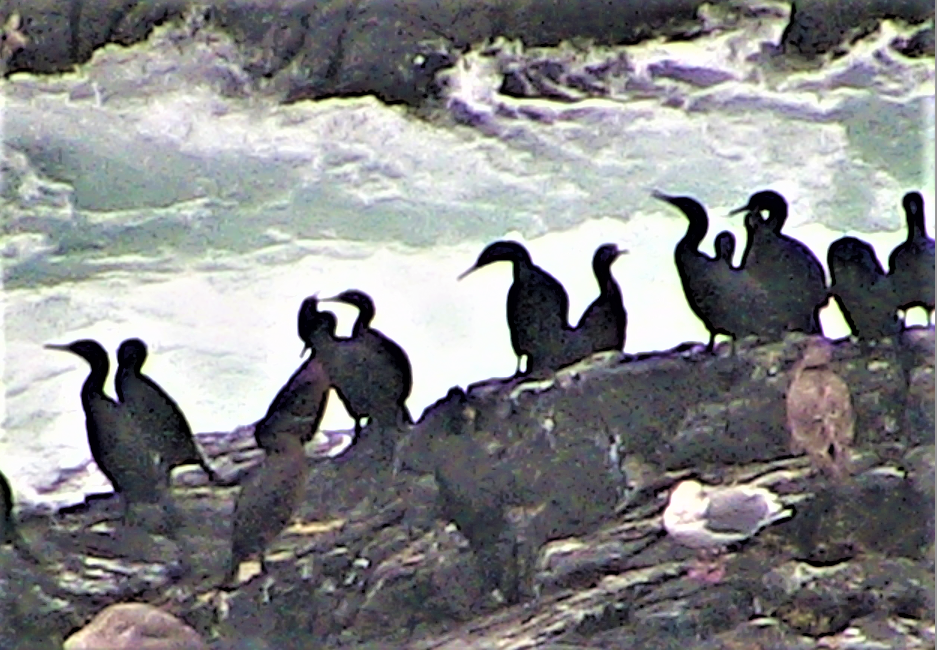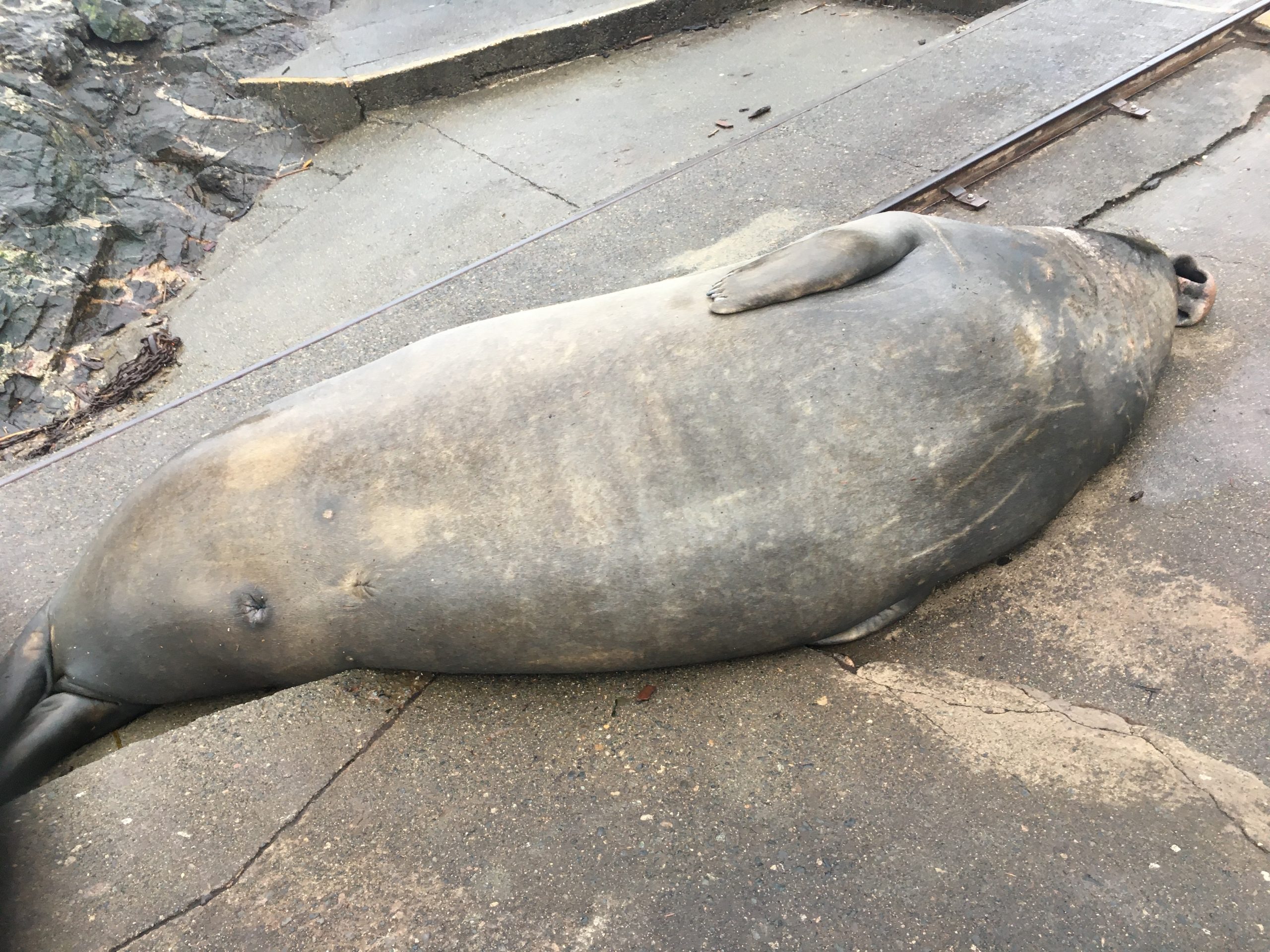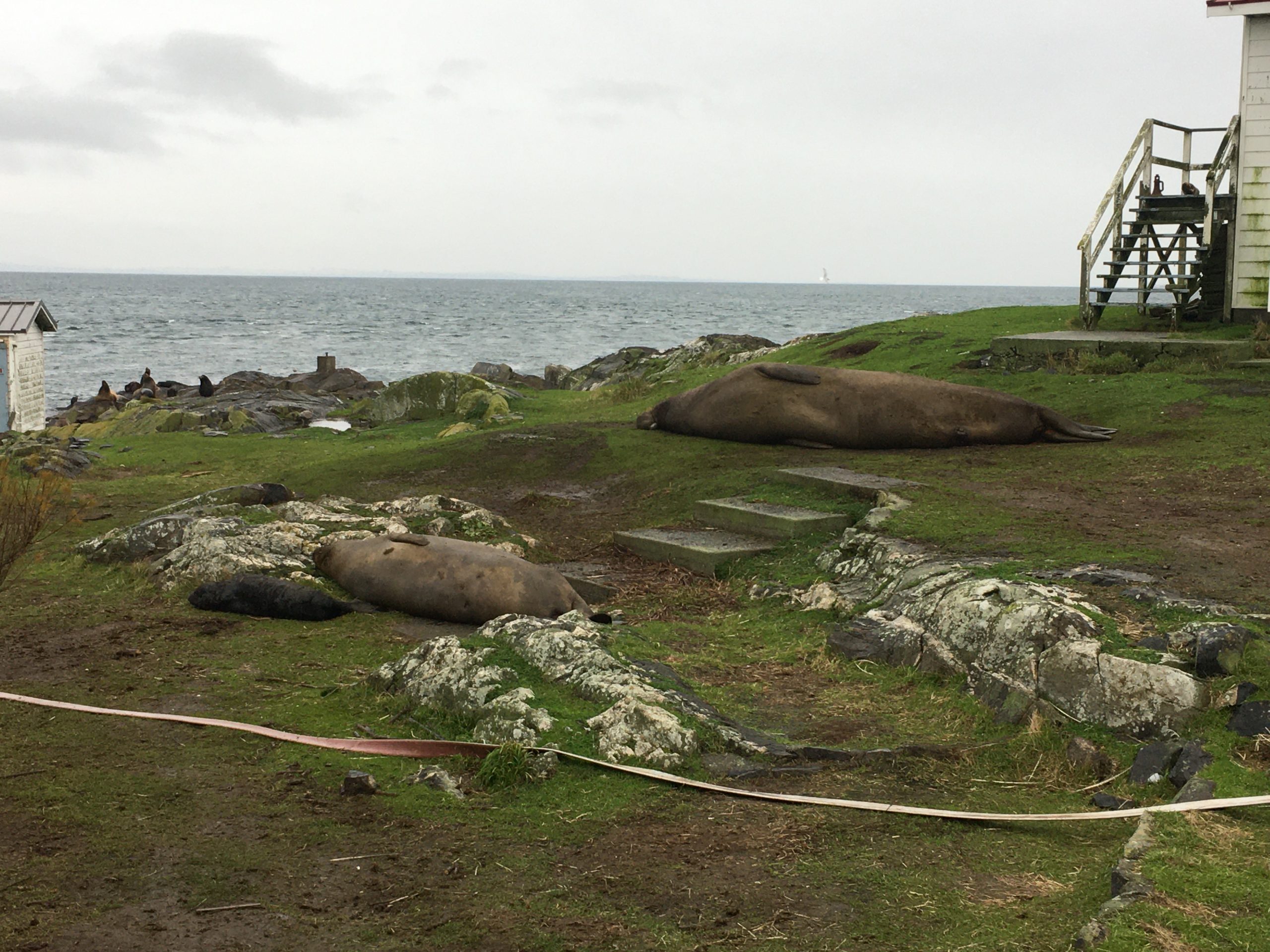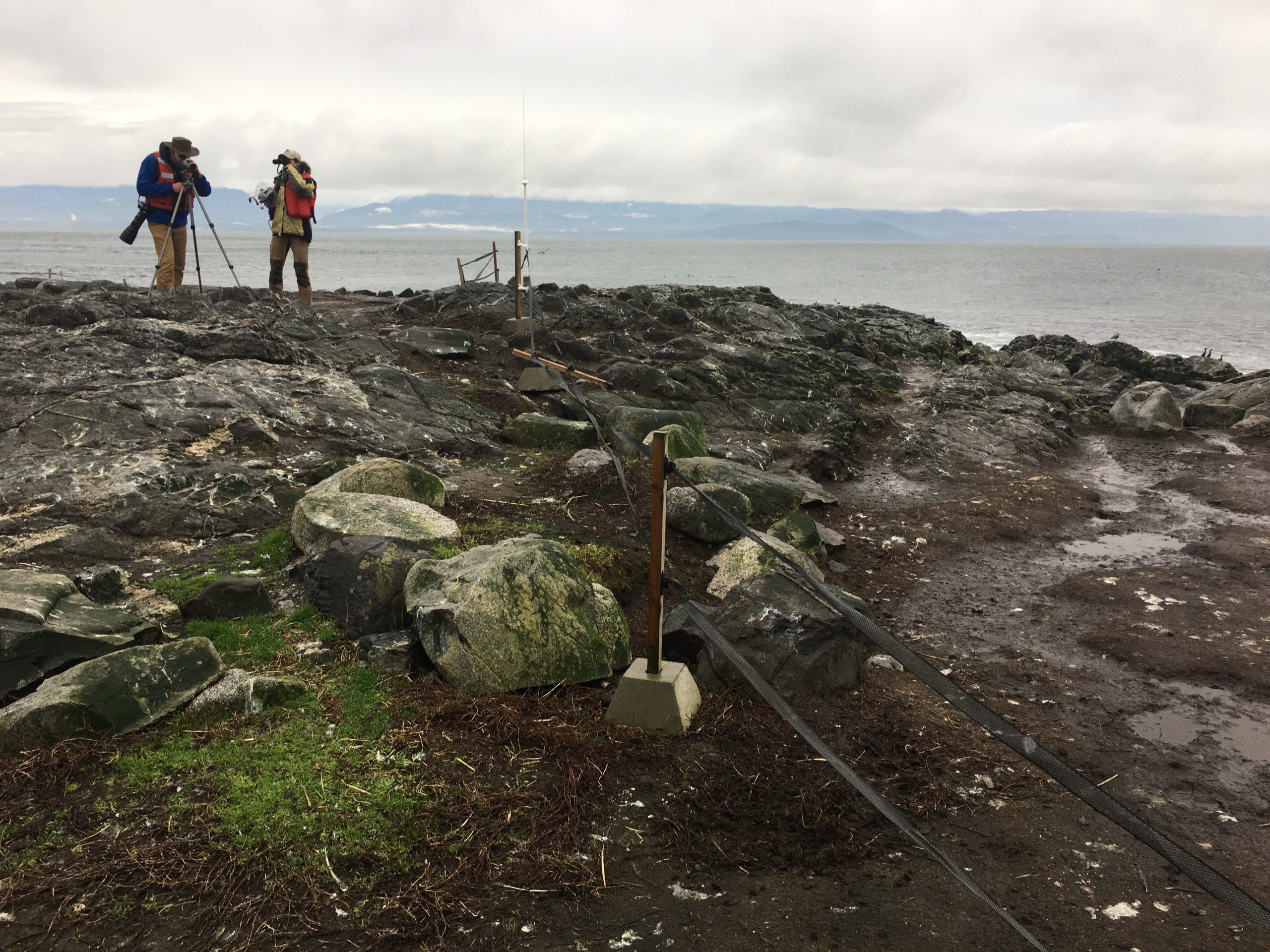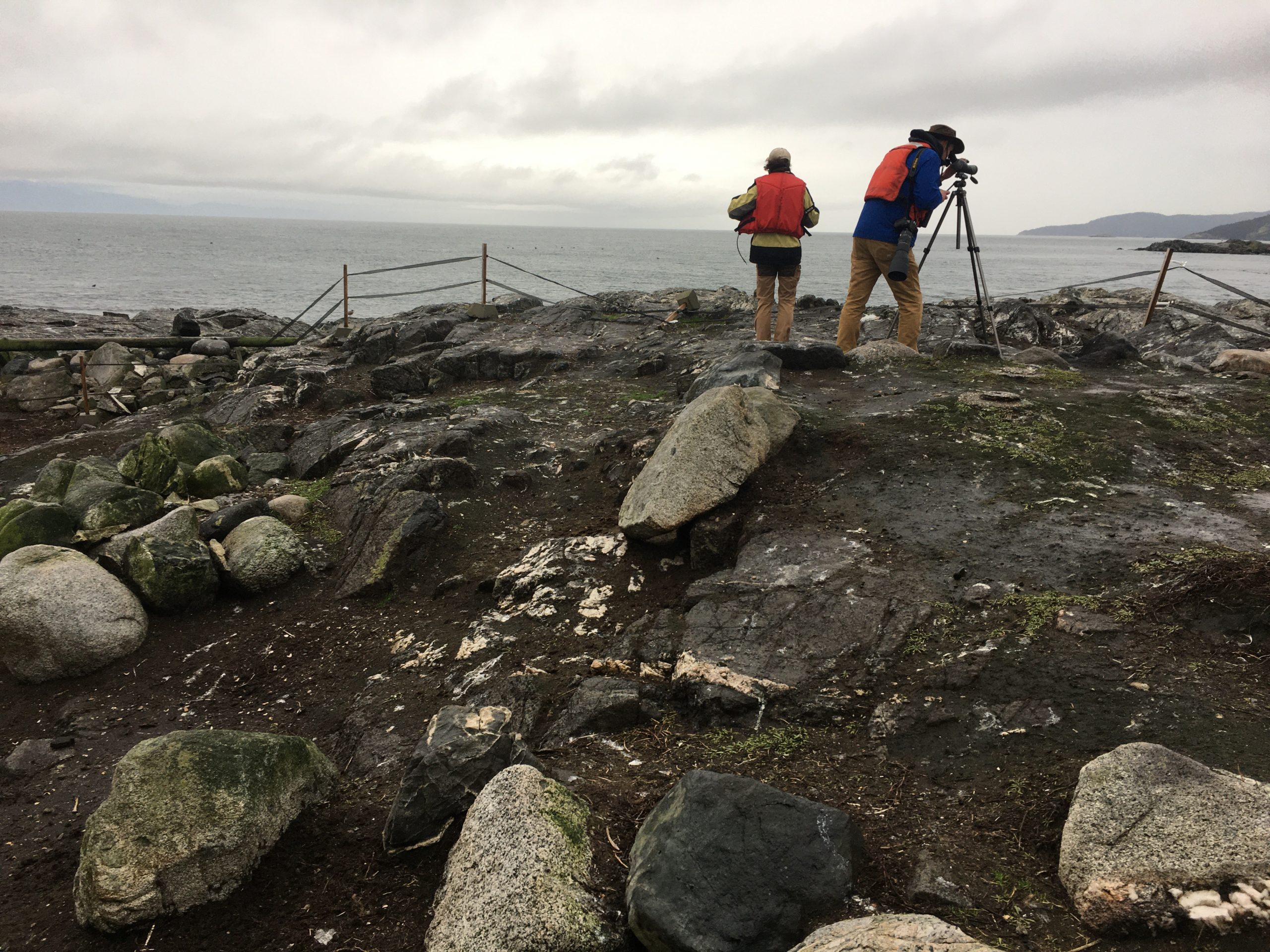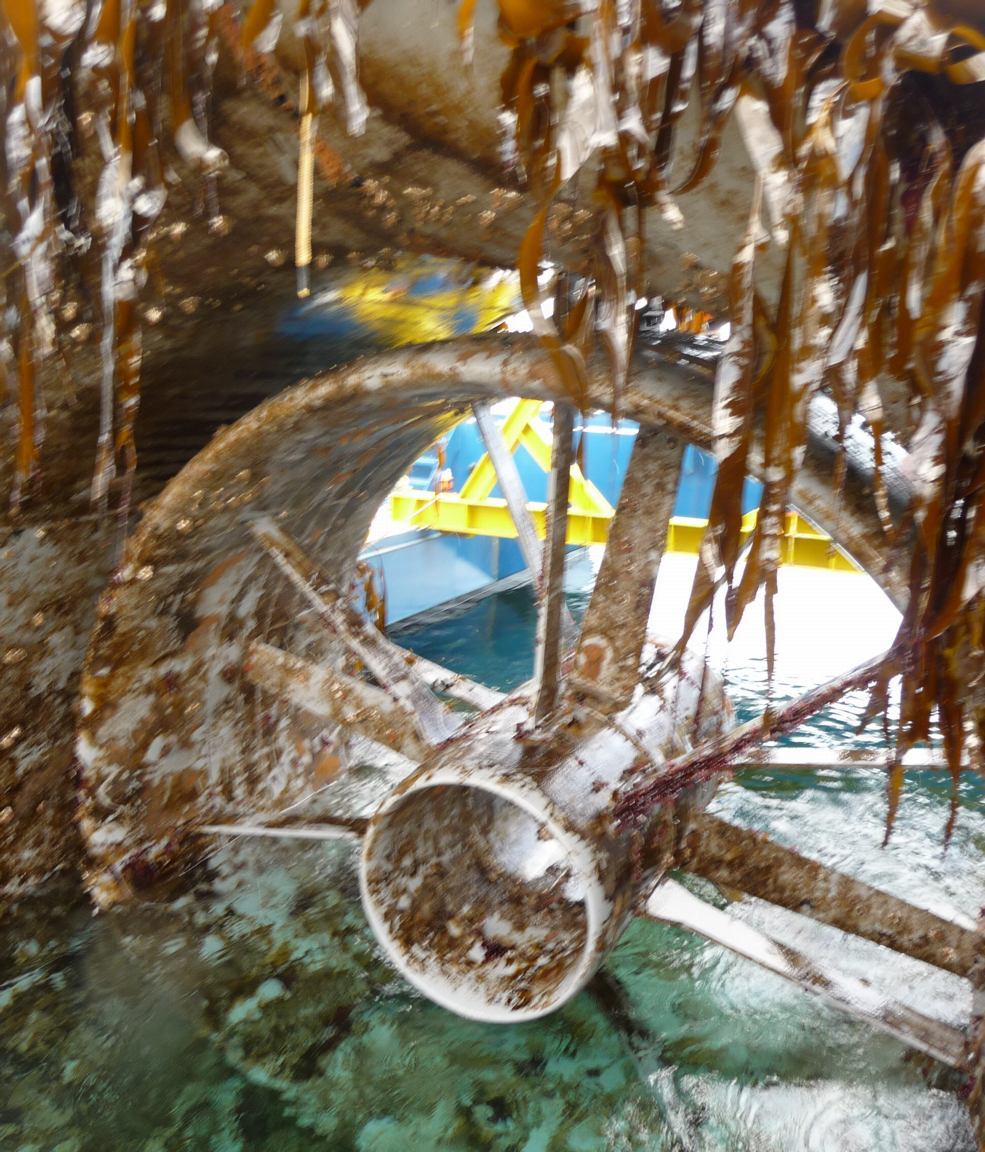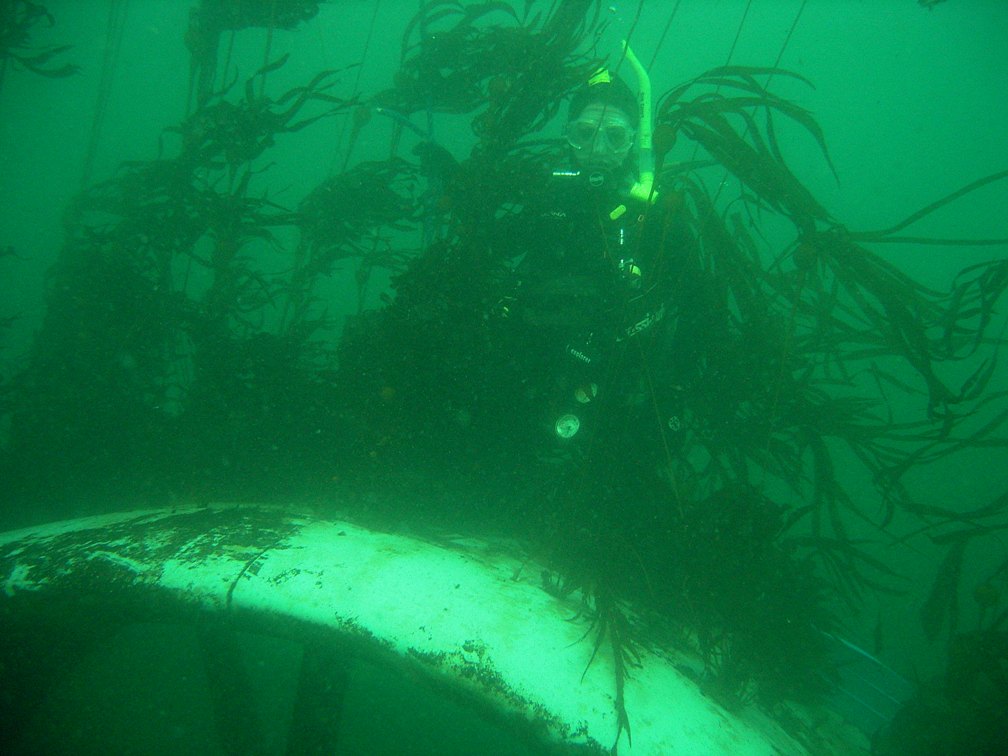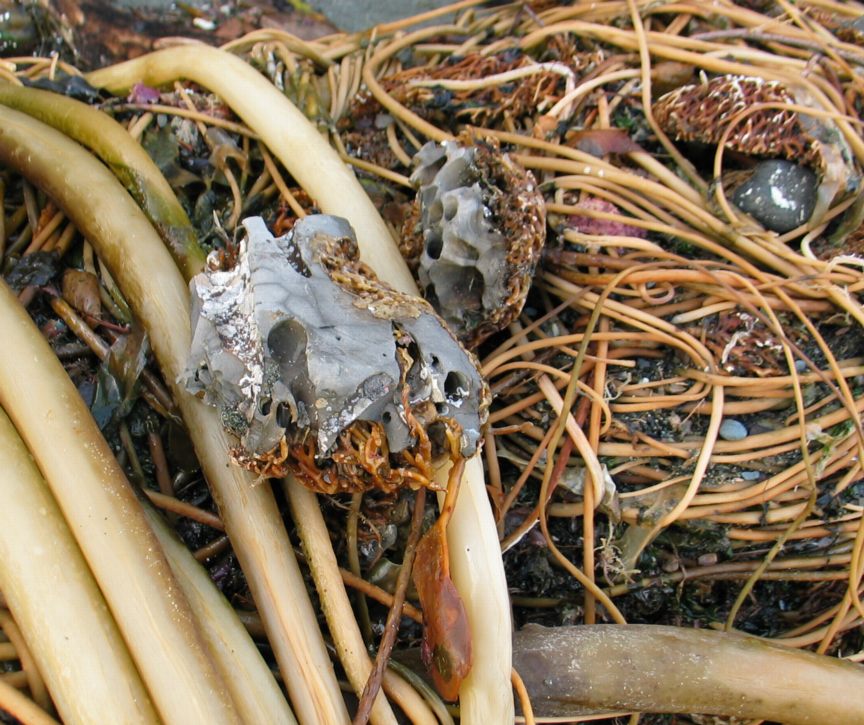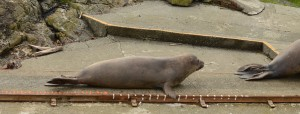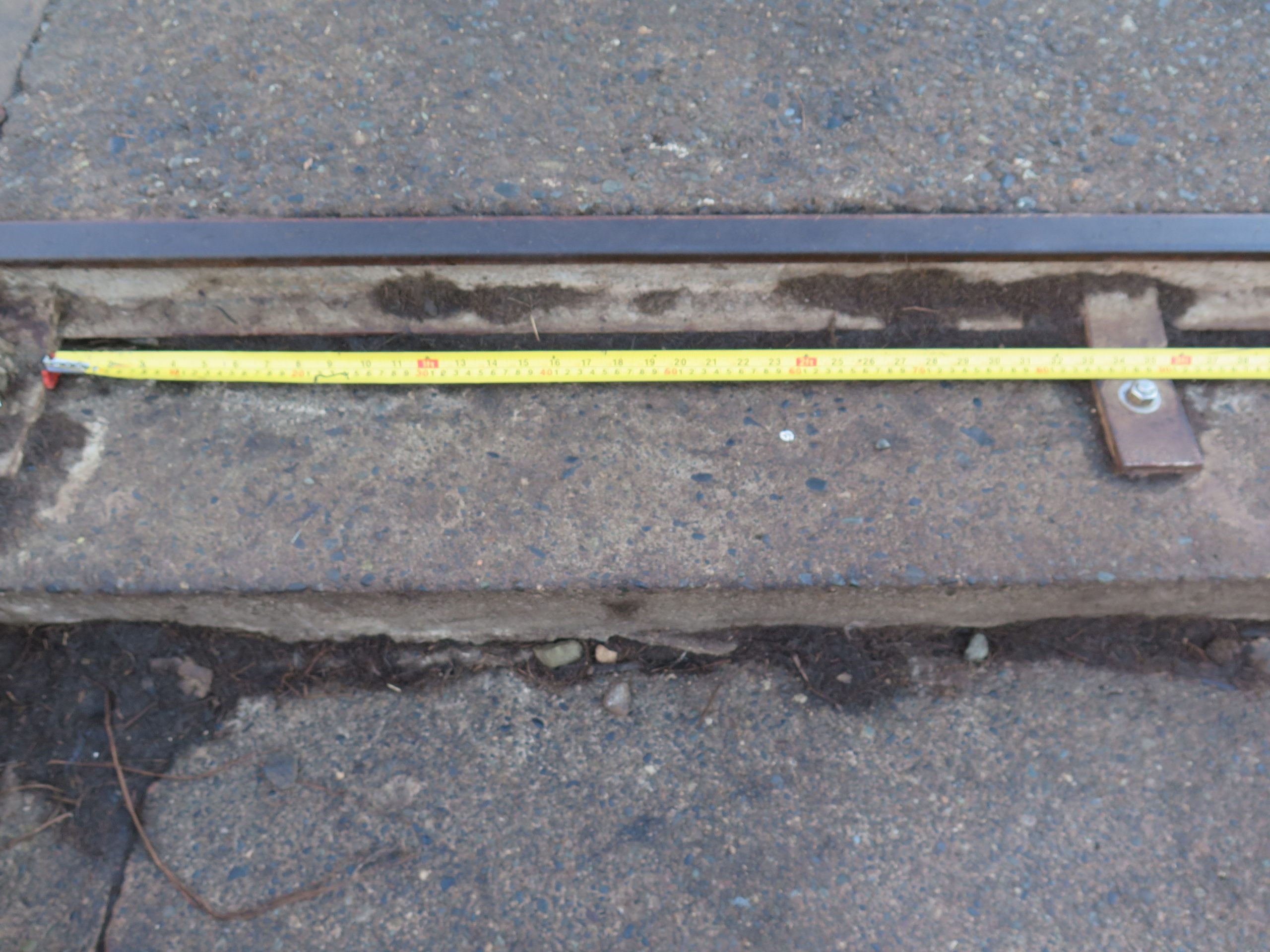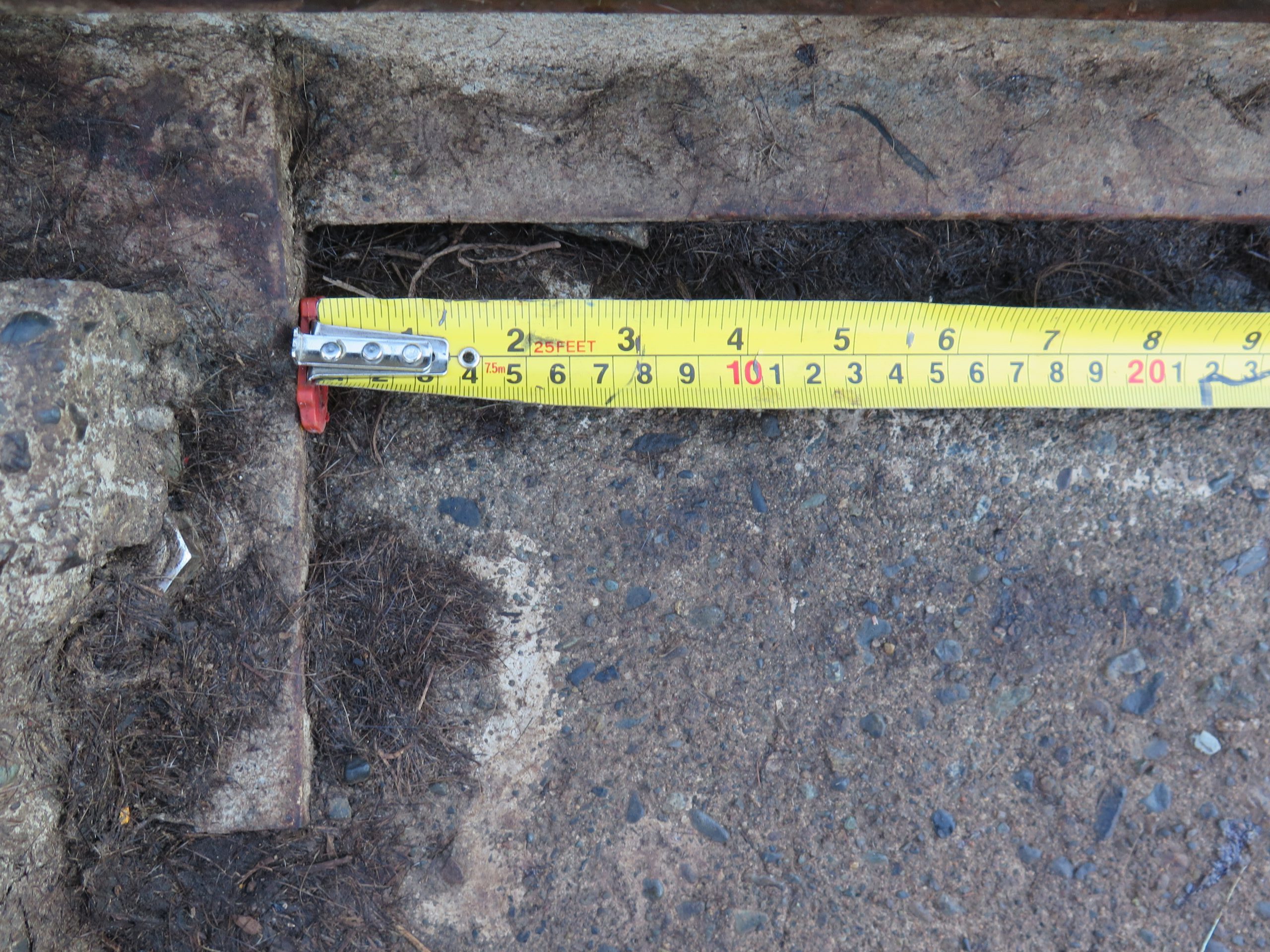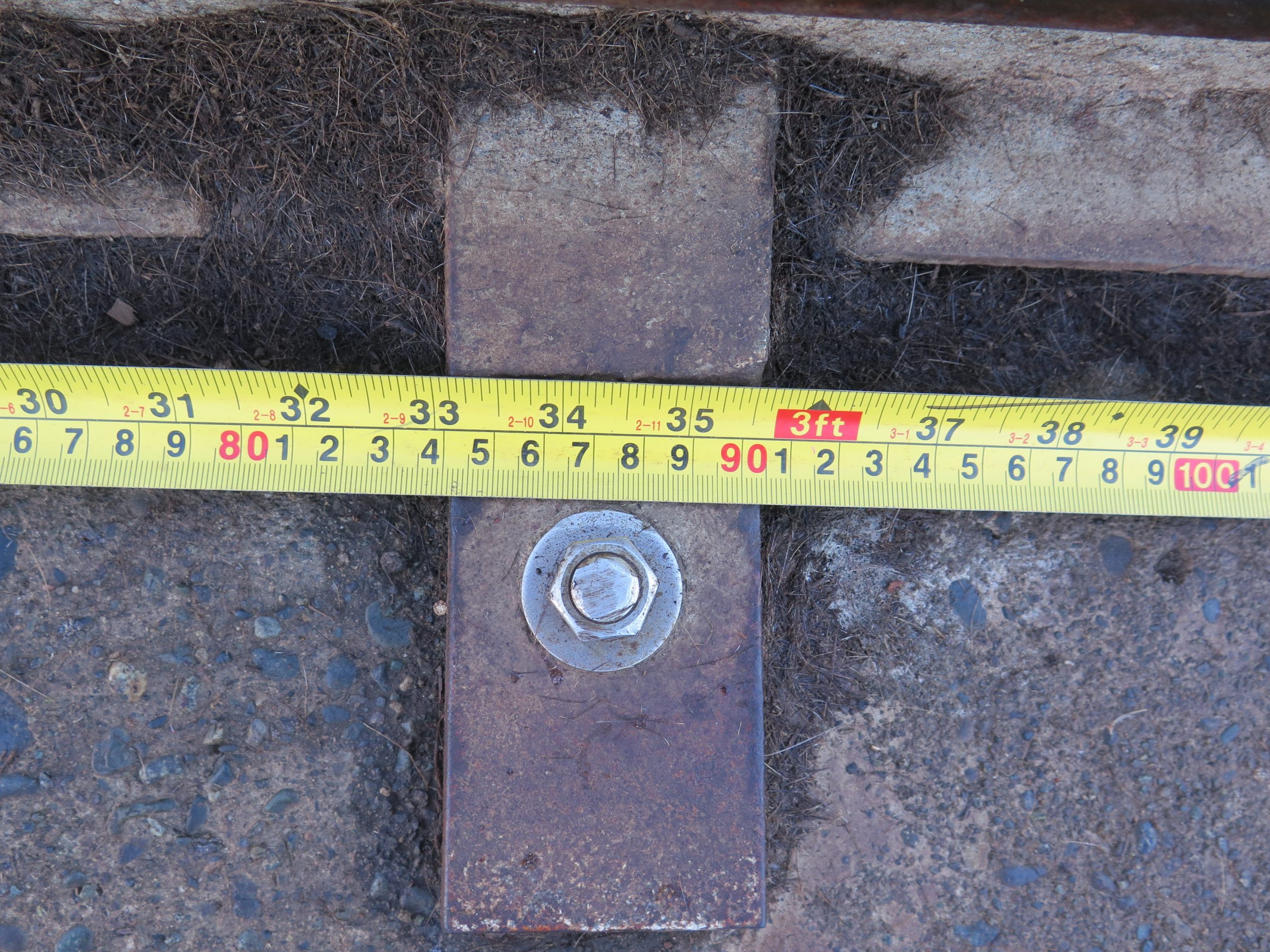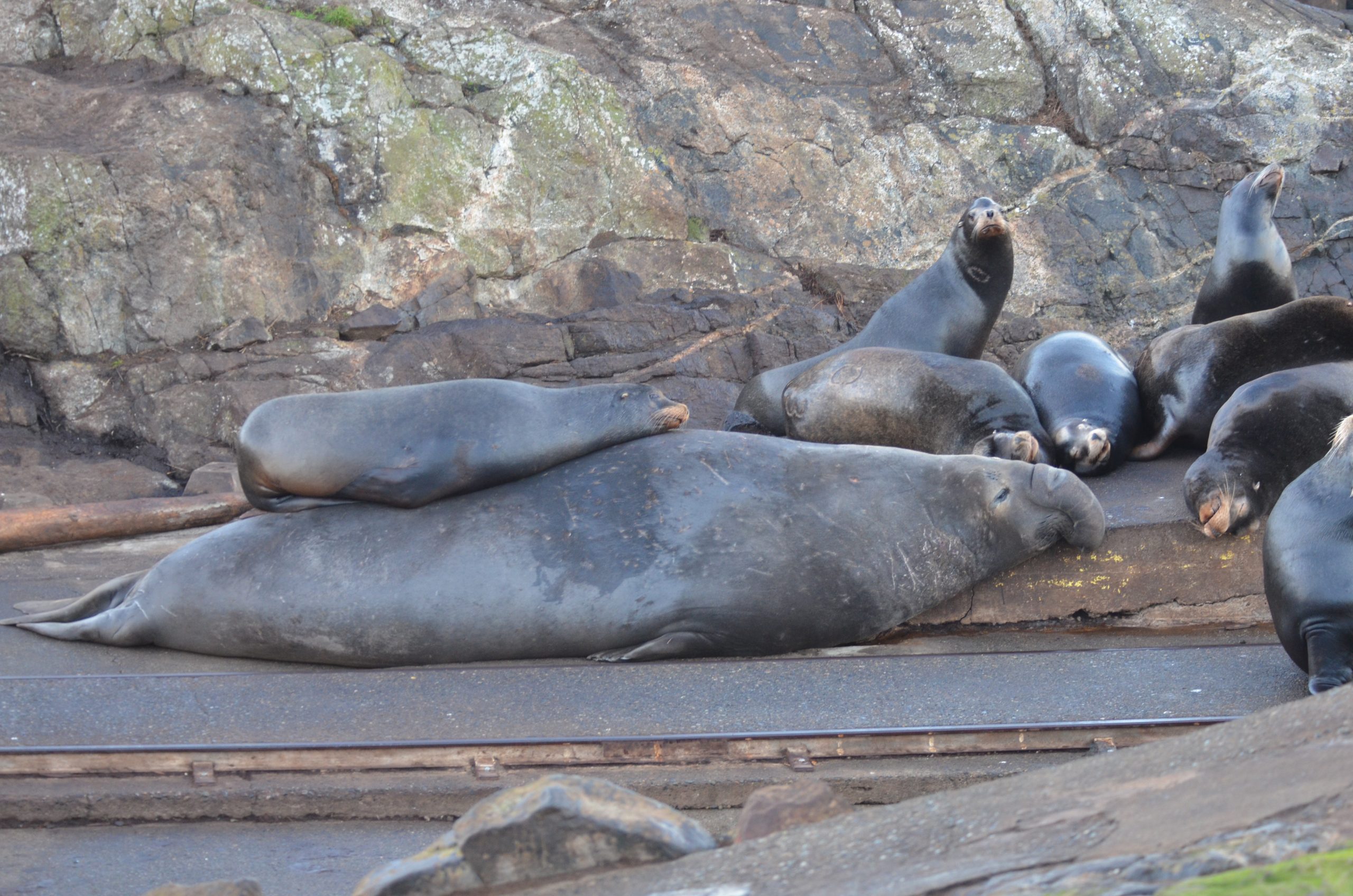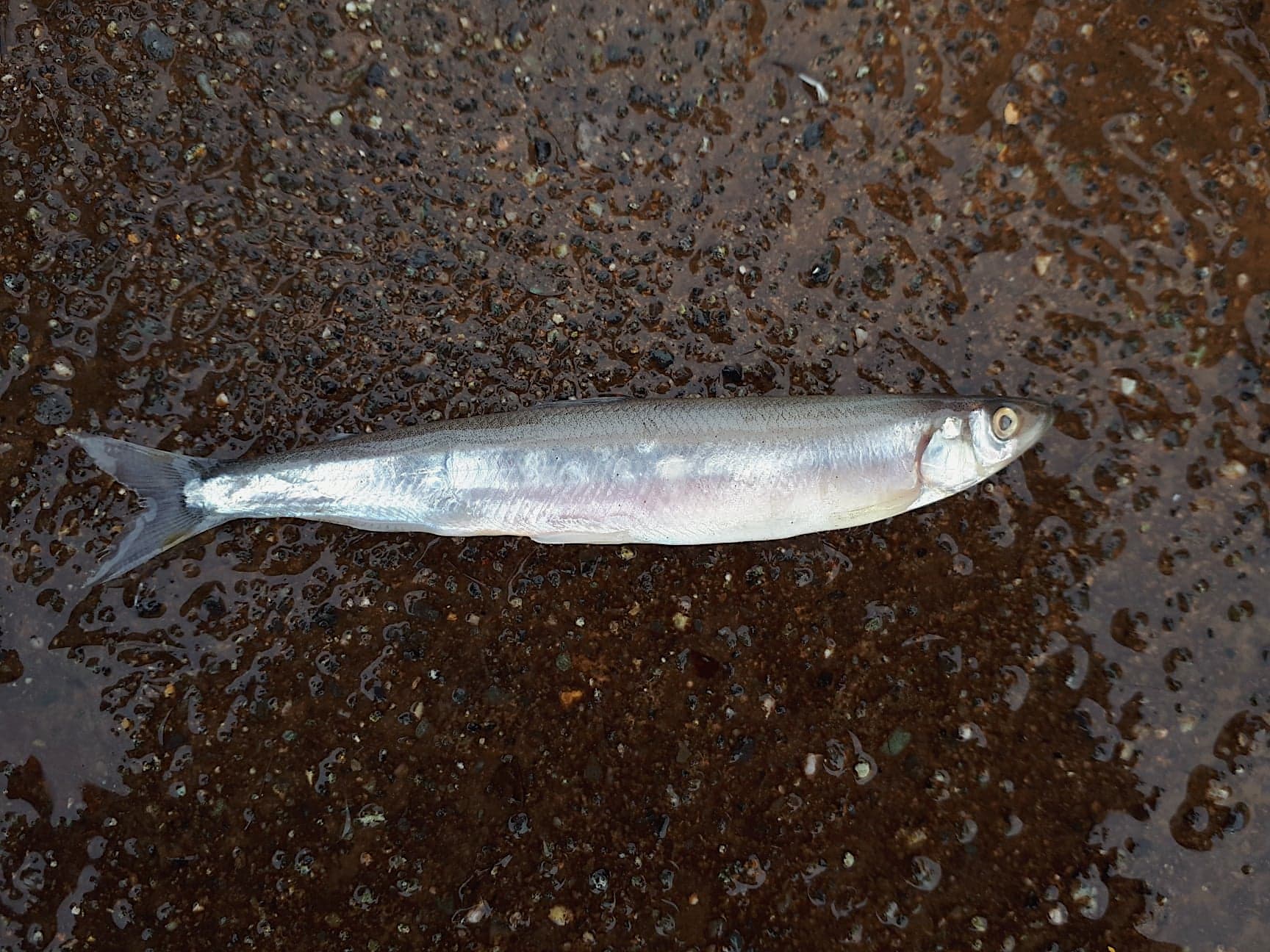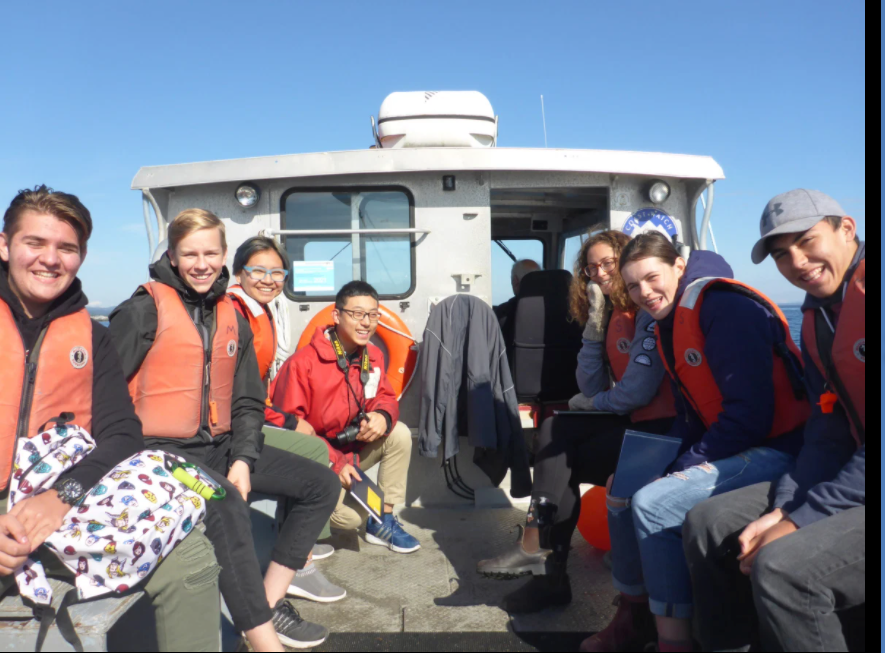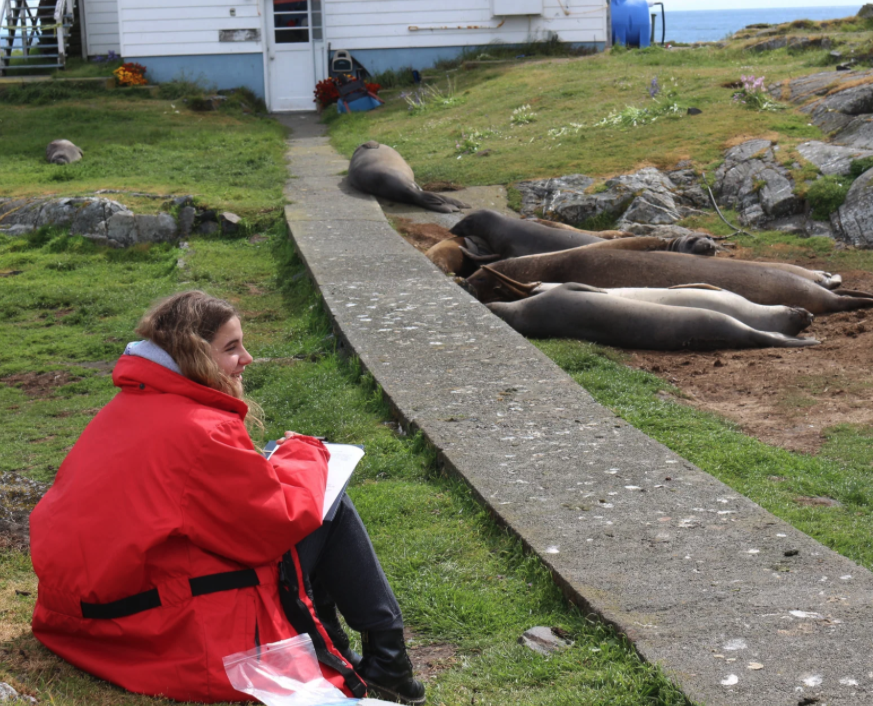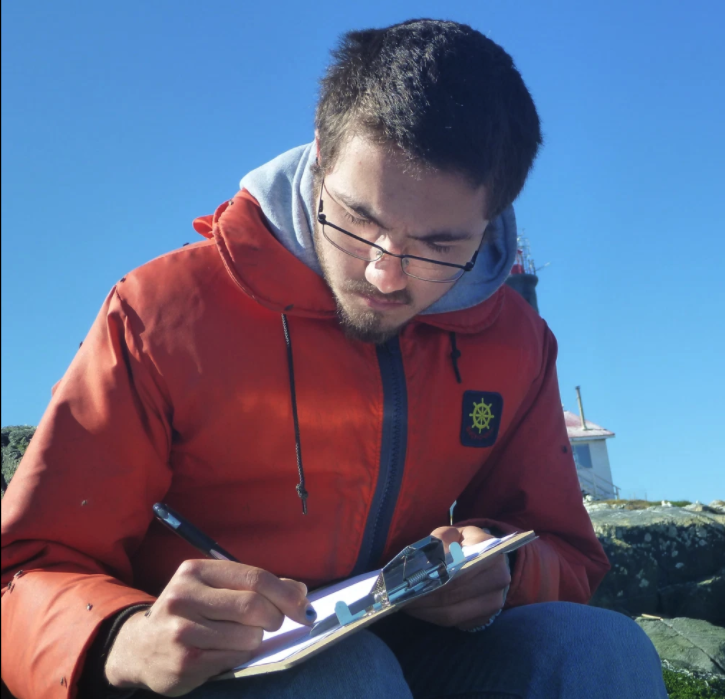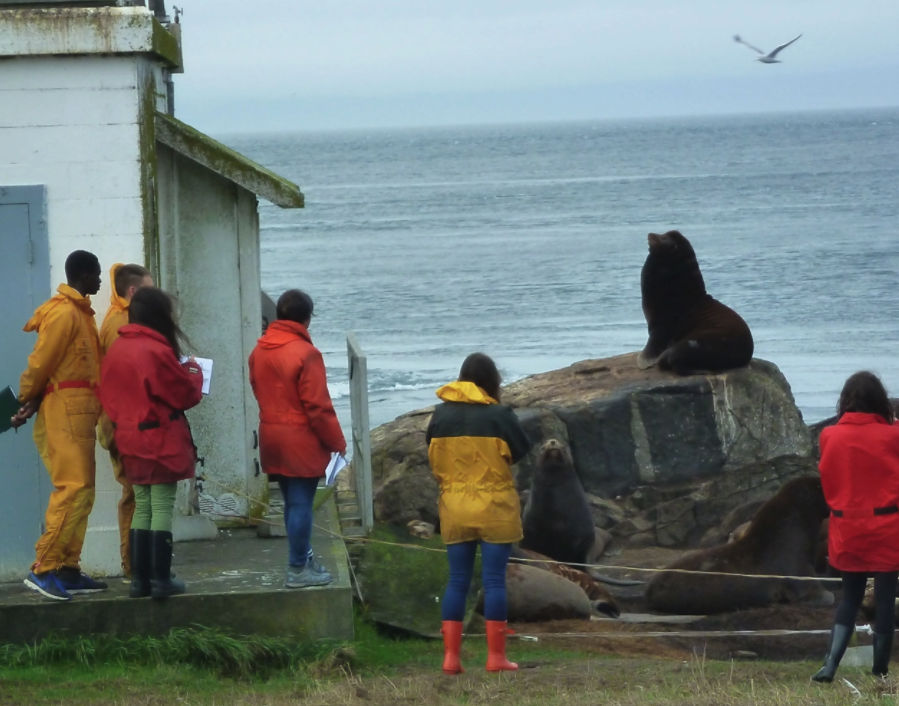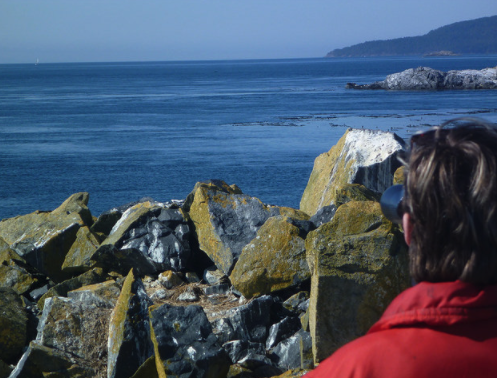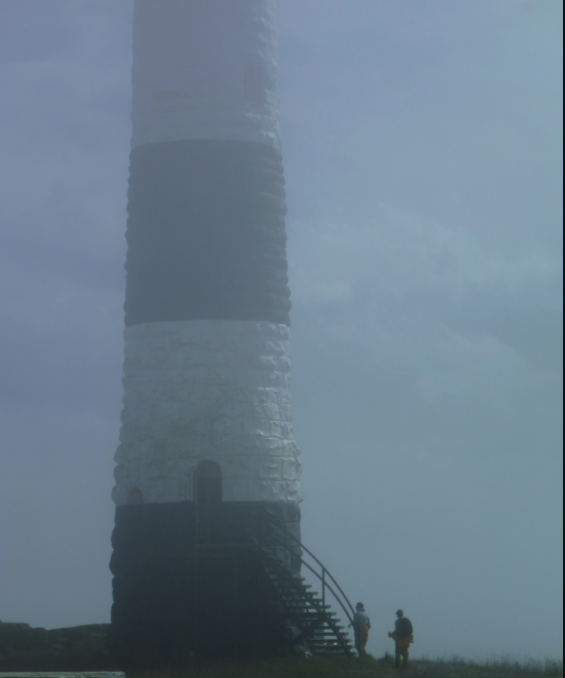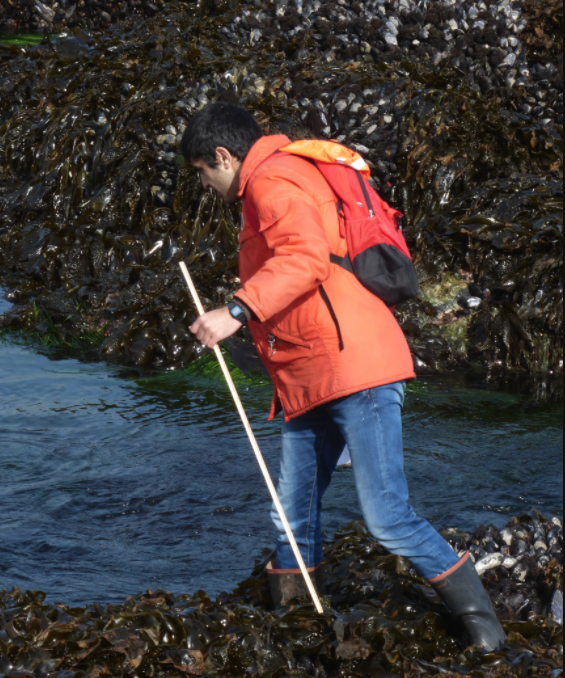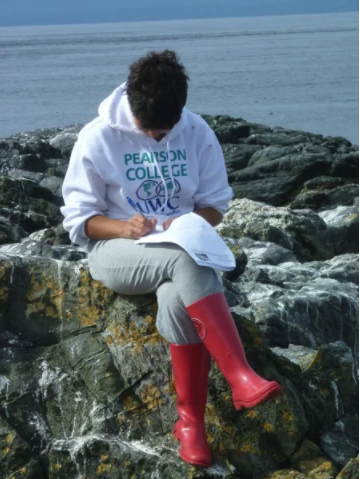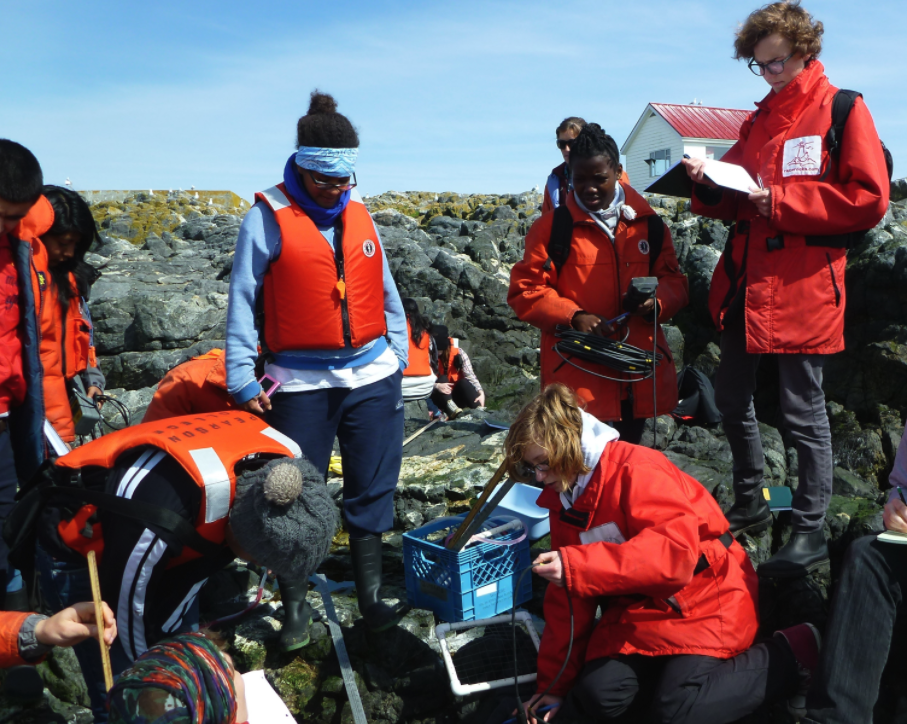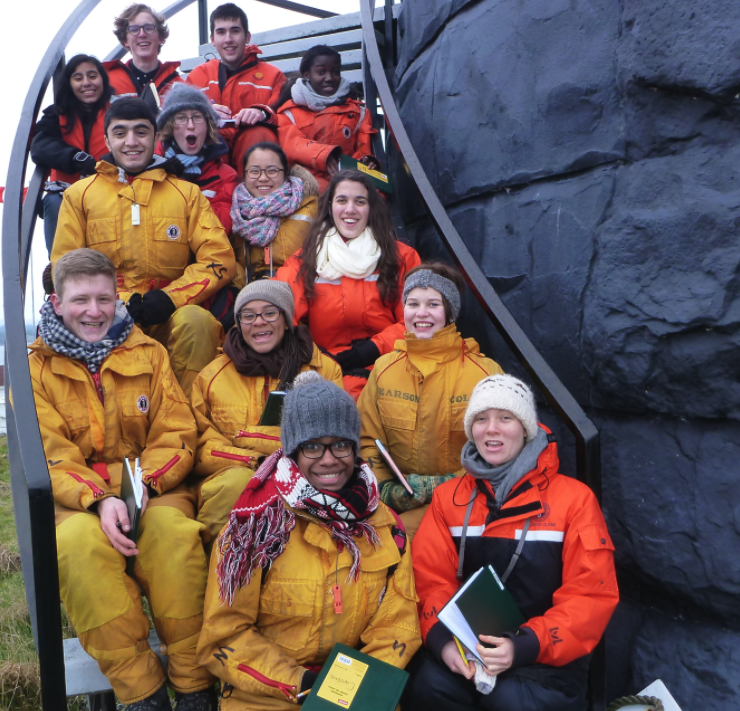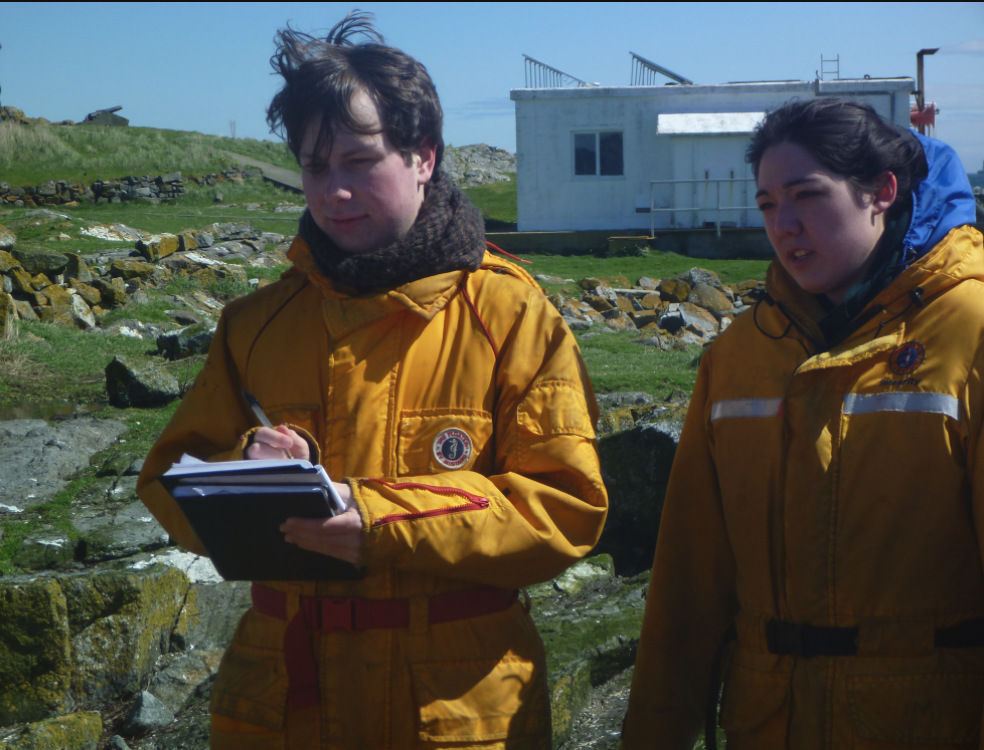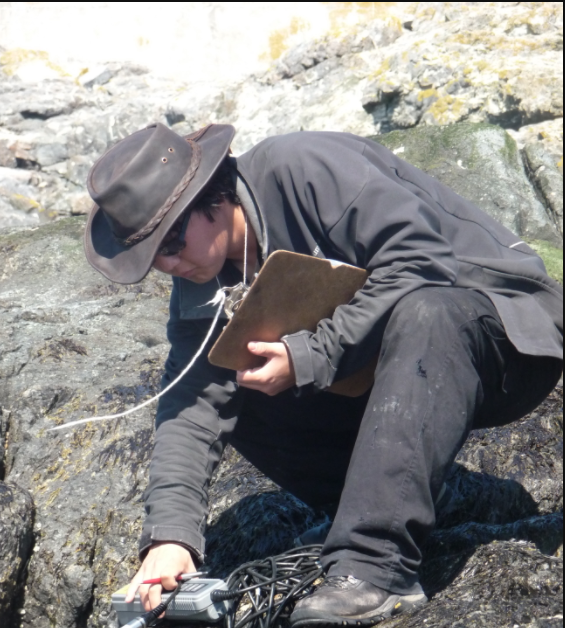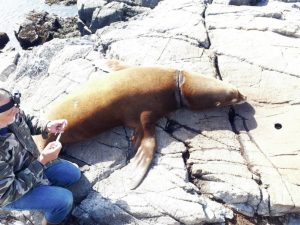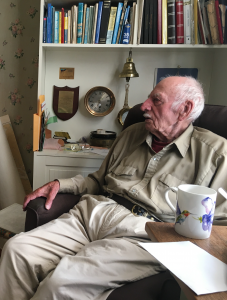
Trevor Anderson at age 100
On October 22nd we were invited to the 100th year birthday party for Trevor Anderson, the light keeper at Race Rocks when it became an Ecological Reserve. Trev and Flo Anderson had arrived at Race Rocks with their family in 1966, and served at the station until they had built a boat and left to sail across the Pacific Ocean in 1982. They had been married for 70 years in 2014 and Flo Anderson passed away in 1977.
I first met the Andersons in 1976 and the students from Lester Pearson College in the Diving Marine Science and Biology programs started coming out to the Islands for field trips and SCUBA diving, with some even spending their project weeks studying and working at the islands. Students in the Diving and Sea Rescue Services at Pearson College developed a close relationship with these neighbours 5 km out at sea. After many of our dive sessions whenour students were invited into their home for tea and cookies, the students would talk excitedly about the incredible sea-life they were seeing at under water. In the late 1970s we started to visit Race Rocks more frequently and the Andersons invited students to stay on project weeks.
Trev and Flo were the first to plant the seed of an idea urging us to see if we could get the government to do some formal recognition and protection of the Race Rocks Area. What they could see at low tide alone was impressive enough, but if the underwater life also could be protected, that would be ideal. In the years 1997 and 1998 we recorded the unique life underwater by logging dives from over 80 locations throughout the Race Rocks archipelago, and by February of 1979 a highly successful workshop took place, with officials invited from the Provincial Museum, the University of Victoria, and the Ministry of Parks who were all enthusiastic and supportive of our proposal.
Throughout that year we worked at the task of formalizing our proposal, presenting it to cabinet and lobbying to get action. Two students in diving and marine science, Johan Ashuvud from Sweden and Jens Jensen from Denmark were especially relentless in their pursuit of our goal. The proposal had to clear 11 agencies in the government bureaucracy and the cabinet before the Reserve could be proclaimed. These two students invited the Director of the Ecological reserves Branch Bristol Foster, and the Deputy Minister of Parks Tom Lee out to dive and then kept following it up with phone calls, even after hours! Their persistence finally paid off when after a year, the shortest time any reserve proposal has ever taken, the Minister of Parks was able to request Prince Charles on his visit to the college as international board president (April 1980) to make the formal announcement proclaiming Race Rocks the 97th Provincial Ecological Reserve.
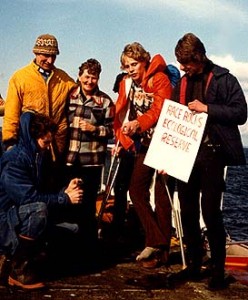 The day we received the information that the reserve was proclaimed by the Ecological Reserves Branch of the Ministry of Lands Parks and Housing, The group of students who had worked so hard on the proposal went out to Race Rocks to give the news to Trev and Flo and present them with a very unofficial looking sign.
The day we received the information that the reserve was proclaimed by the Ecological Reserves Branch of the Ministry of Lands Parks and Housing, The group of students who had worked so hard on the proposal went out to Race Rocks to give the news to Trev and Flo and present them with a very unofficial looking sign.
The next week Trev and Flo asked the group of students who had worked so hard to establish the Ecological Reserve to come out to the island one afternoon where they presented the students with medals and “The Order of Race Rocks” as recognition and appreciation for their work in creating the Ecological reserve.
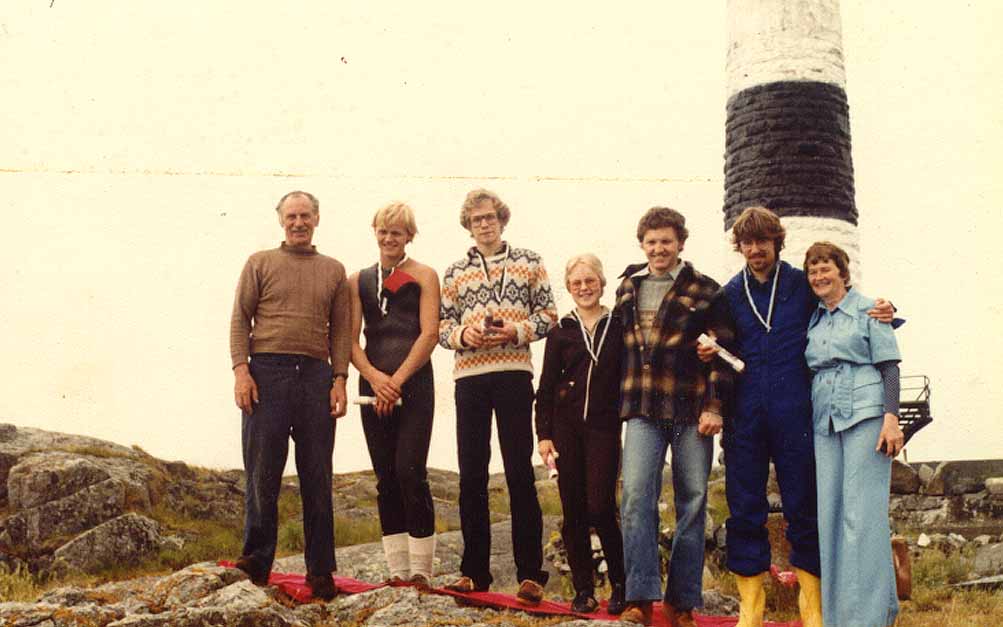
Trev, Hans, Johan, Iina, Garry, Jens and Flo
FER Board member Garry Fletcher taught at Lester Pearson College from 1996 to 2004 and has been the ecological reserve warden for Race Rocks since 1980.

